
Posts Tagged: digger bees
Those Bumble Bee Mimics at Bodega Head
If you've ever been to Bodega Head in Sonoma County, you may have marveled at the waves crashing and the whales surfacing. But have you ever seen the digger bees, Anthophora bomboides stanfordiana, aka bumble bee mimics, that nest in the sandstone...
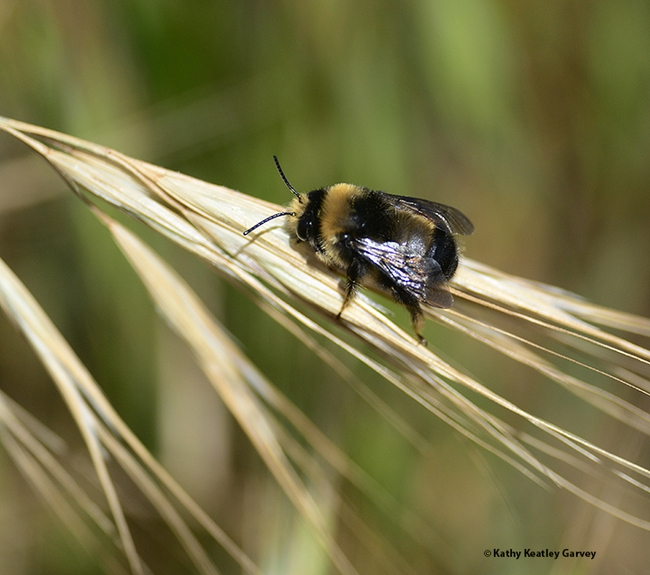
A digger bee, bumble bee mimic Anthophora bomboides stanfordiana, warming its flight muscles on Bodega Head on May 9, 2022. (Photo by Kathy Keatley Garvey)
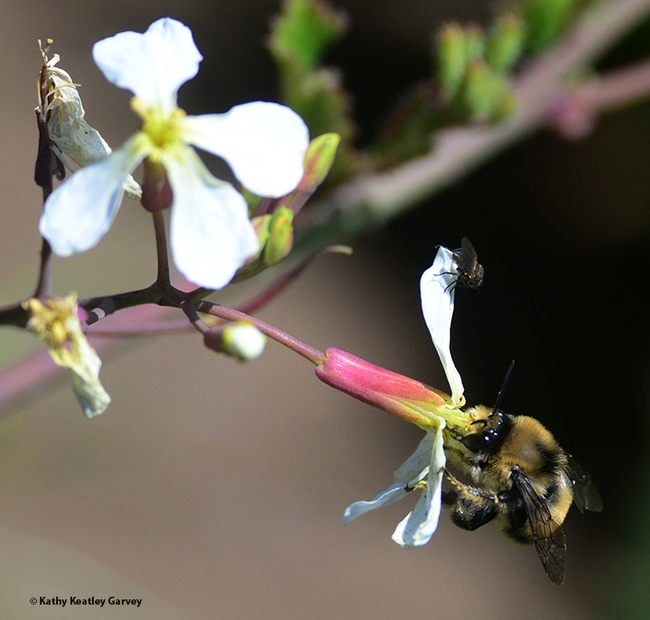
Two insects on one wildradish blossom: a fly and a digger bee, Anthophora bomboides stanfordiana, at Bodega Head on May 9, 2022. (Photo by Kathy Keatley Garvey)
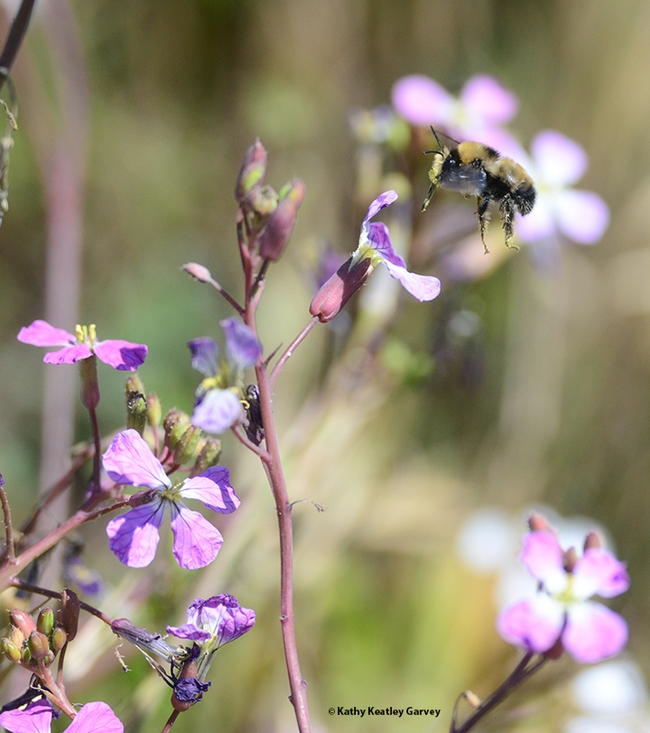
A digger bee, Anthophora bomboides stanfordiana, in flight at Bodega Head on May 9, 2022. The flower is a wild radish, Raphanus raphanistrum. (Photo by Kathy Keatley Garvey)
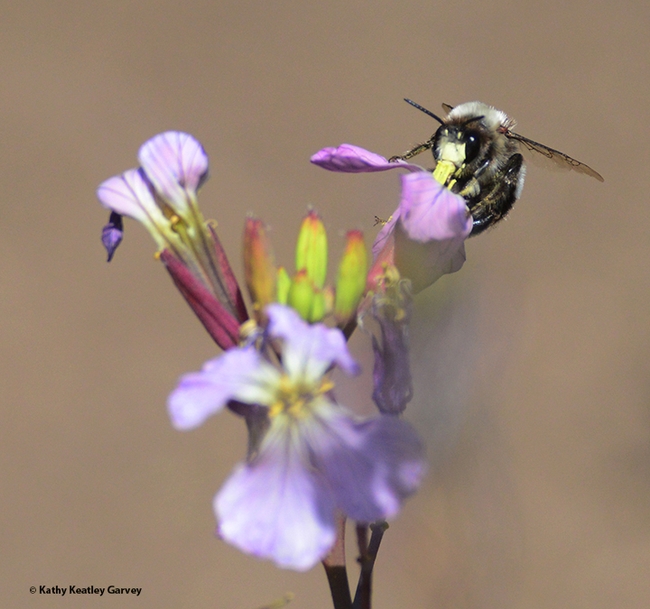
A bumble bee mimic, Anthophora bomboides stanfordiana, sipping nectar from a wild radish, Raphanus raphanistrum, on May 9, 2022 on Bodega Head. (Photo by Kathy Keatley Garvey)
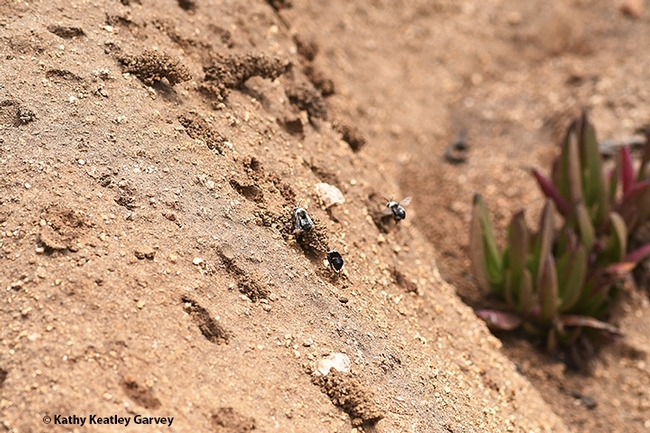
Archived photo of nests of Anthophora bomboides stanfordiana on the sandstone cliffs, Bodega Head. (Photo by Kathy Keatley Garvey)
The Beckoning Bees at Bodega Bay
Head to the Bodega Bay in Sonoma County and you'll see little kids building sandcastles on the beaches. But head to Bodega Head in the spring and summer, and if you're lucky, you'll see female digger bees—bumble bee mimics—creating their own versions of sandcastles. These...
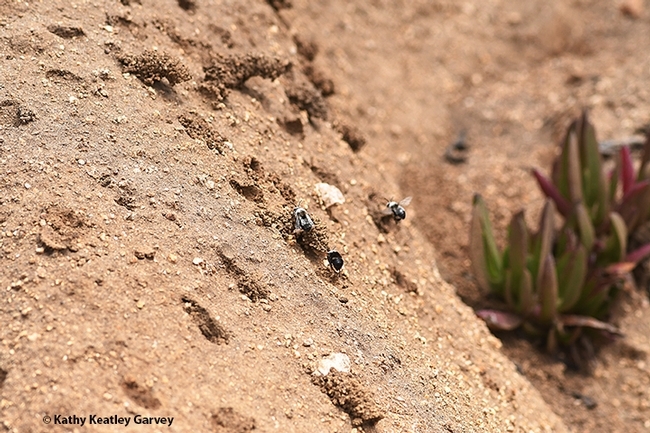
Digger bees, Anthophora bomboides stanfordiana, building their nests in the sand cliffs off Bodega Head. (Photo by Kathy Keatley Garvey)
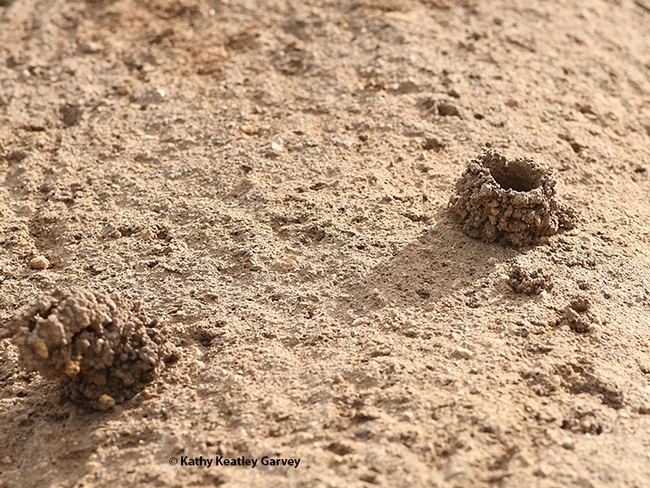
These are the turrets, aka "sandcastles," that digger bees build in the sand cliffs off Bodega Head. (Photo by Kathy Keatley Garvey)
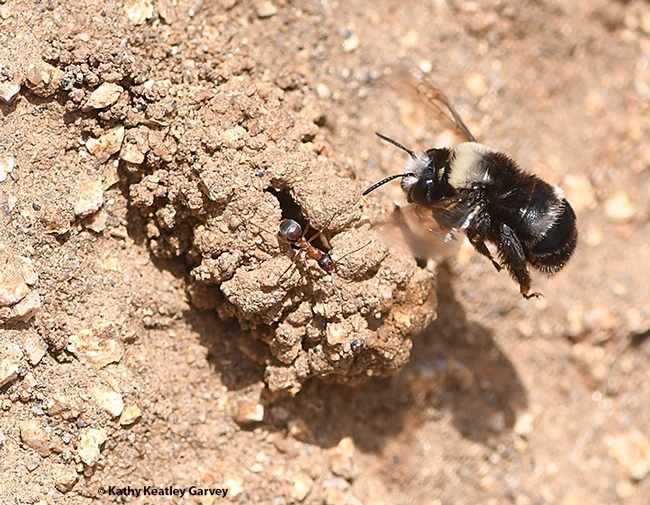
A digger bee, Anthophora bomboides stanfordiana, heading toward her nest at Bodega Head. (Photo by Kathy Keatley Garvey)
The Bees of Bodega Head
There's more to Sonoma County's Bodega Head than the stunning views, crashing waves, nesting seabirds, and bursts of flora and fauna. The sand cliffs are also the home of a digger bee, a bumble bee mimic known as Anthophora bomboides stanfordiana. "The species name...
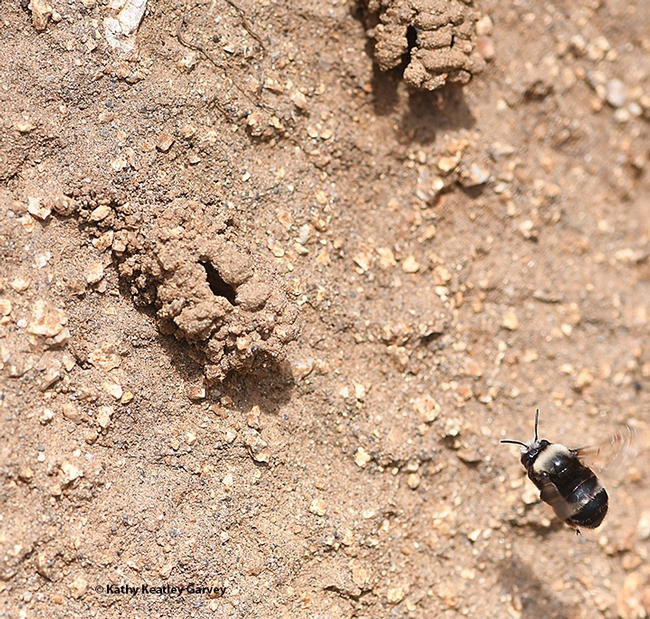
A digger bee, Anthophora bomboides stanfordiana, returning to her nest on the sand cliffs of Bodega Bay. (Photo by Kathy Keatley Garvey)
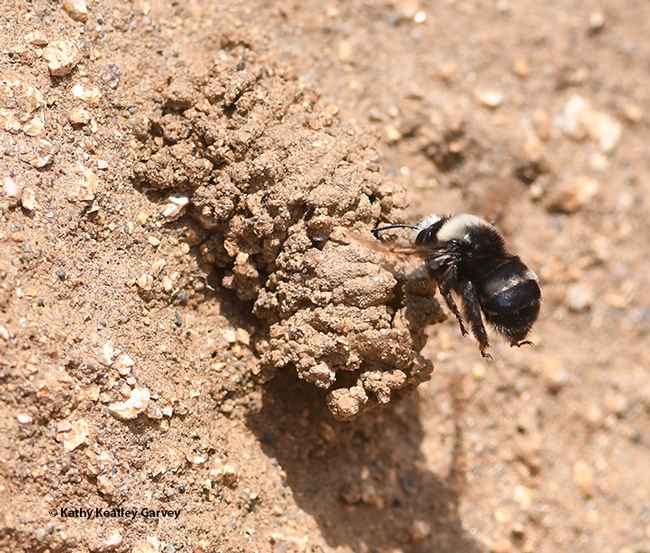
A digger bee, Anthophora bomboides stanfordiana, edges closer to her nest on the sand cliffs of Bodega Bay. (Photo by Kathy Keatley Garvey)
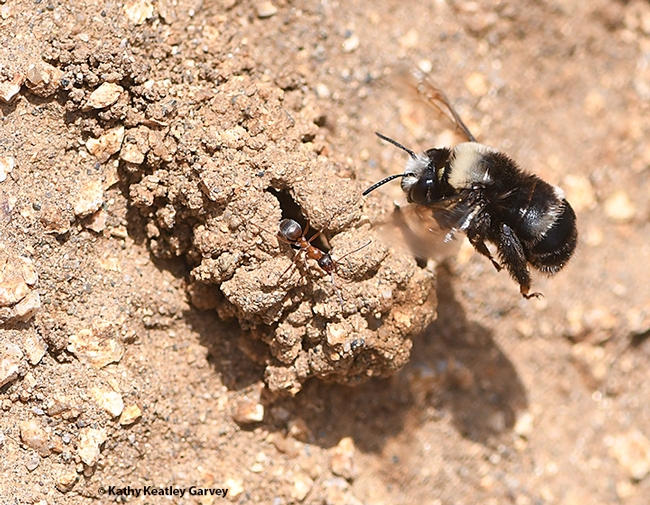
A bee-ant encounter: The digger bee, Anthophora bomboides stanfordiana, encounters an ant, Formica transmontanis, as identified by ant specialists Phil Ward and Brendon Boudinot of UC Davis. Both species nest on the sand cliffs. (Photo by Kathy Keatley Garvey)
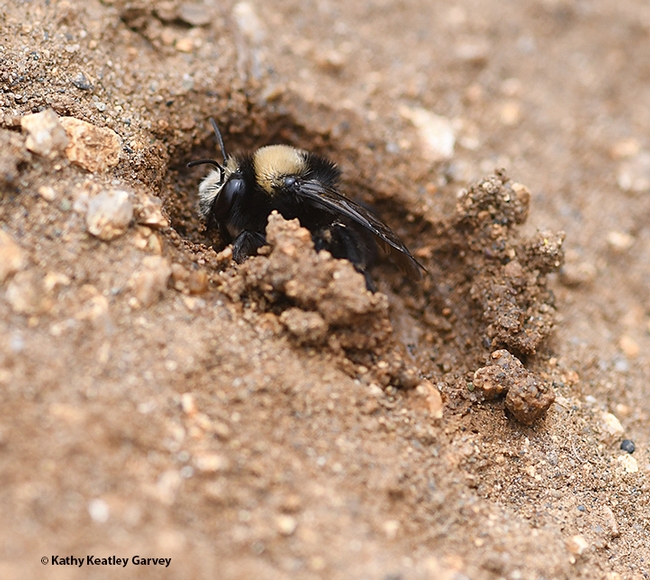
A digger bee, Anthophora bomboides stanfordiana, excavating a nest on the sand cliffs of Bodega Head. (Photo by Kathy Keatley Garvey)
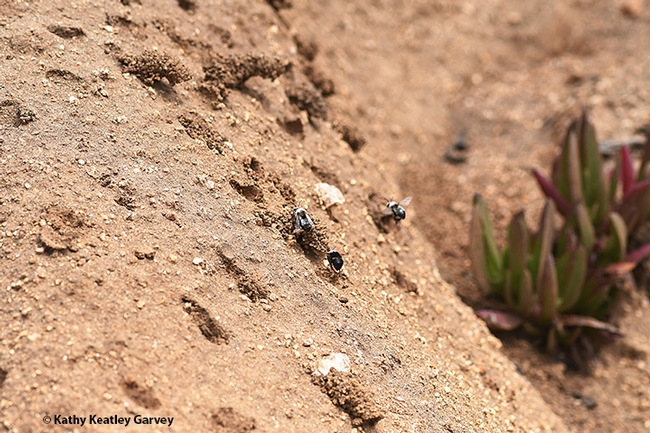
Four digger bees, Anthophora bomboides stanfordiana, appear in this image at Bodega Head. (Photo by Kathy Keatley Garvey)
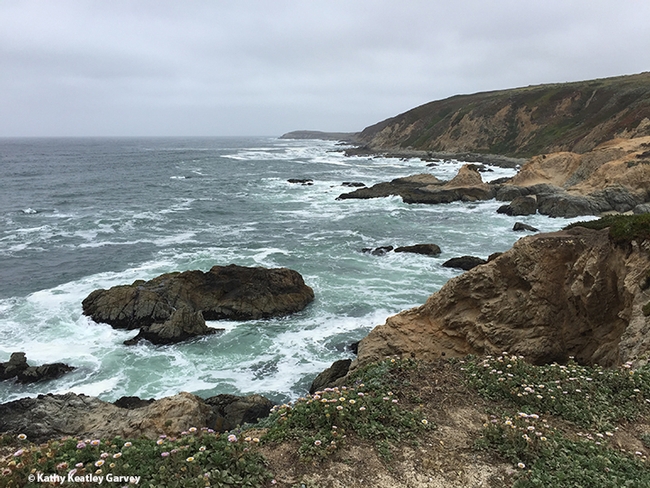
A view from Bodega Head. Most tourists are unaware of the digger bees that inhabit the sand cliffs. (Photo by Kathy Keatley Garvey)
Those Incredible Digger Bees and Their Nest Parasites
If you want to learn about digger bees and the exciting research that UC Davis evolutionary ecologist Leslie Saul-Gershenz is pursuing, check out the wall display at the Bohart Museum of Entomology. The insect museum is located in Room 1124 of the Academic Surge Building on Crocker Lane, UC...
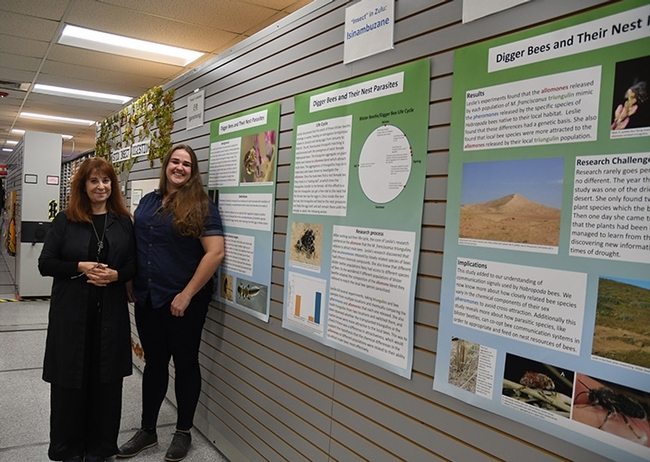
Leslie Saul-Gershenz (left) and curator Emma Cluff stand by their display at the Bohart Museum of Entomology. (Photo by Kathy Keatley Garvey)
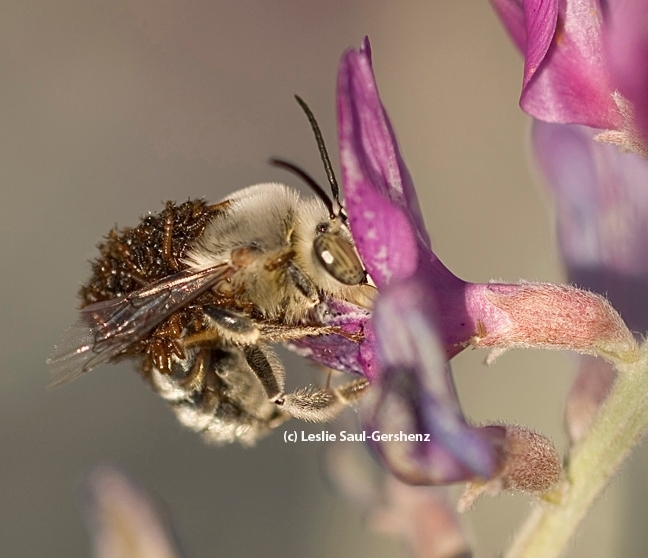
A digger bee, Habropoda pallida, with blister bee larvae. (Photo by Leslie Saul-Gershenz)
Why Silver Digger Bees Are Like Gold
Why silver digger bees are like gold... Remember those "long lost" silver digger bees found last week at the San Francisco Presidio? They hadn't been seen in large aggregations for nearly a century. And yet there they were in the newly restored sand dunes at the Presidio, a former military post...
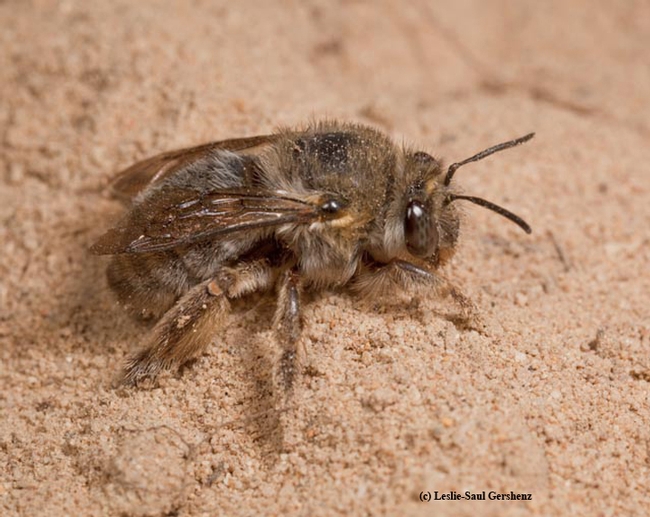
Close-up of female silver digger bee, Habropoda miserabilis, taken at Waldport, Ore. in 2015. (Copyrighted Photo by Leslie Saul-Gershenz. Used with Permission)
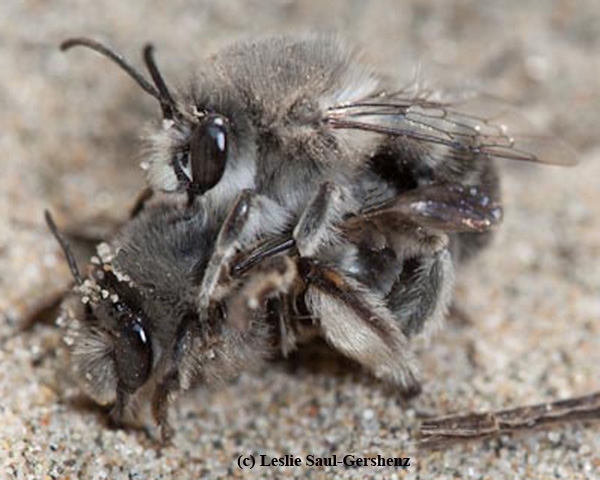
Habropoda miserabilis male and female—the male is mate-guarding the female after mating with her, preventing her from mating with other males. (Copyrighted photo by Leslie Saul-Gershenz. Used with permission)
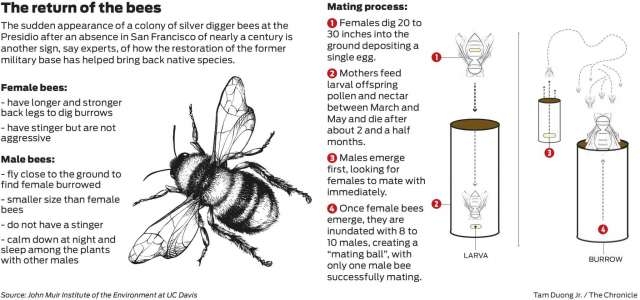
This graphic, the work of Leslie Saul-Gershenz, details information on the male and female of the species.
